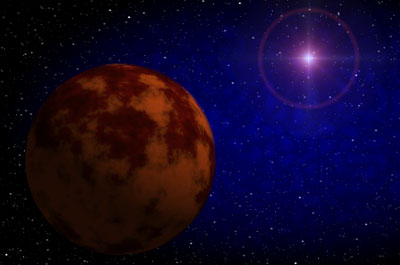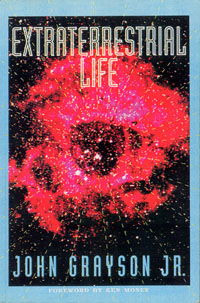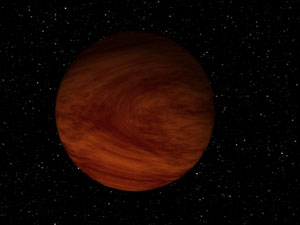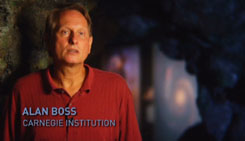
|

The Brown Dwarf That Almost Made Exoplanet History |
|
-Home Page
-Site Map -Contact Page
Astronomy
-Cosmos -How the Universe Works

Articles: -E=mc2 Page -Philadelphia Experiment
-The Fourth Density
Science Fiction
-Sliders -Star Trek -The Matrix
Resources: -Dr. Stephen Covey -Dr. Bruce Lipton -Powertalk Interviews -Flax Oil Secrets -Future of Food -Archive Page -What the Bleep Do We Know at Lyratek.com? -Space Adventures Music Releases
|
The common footnote to this story is that Mankind did detect pulsar planets prior to this in 1992, using very different methods and yielding a result that was both unexpected and not really understood. Such planets orbiting pulsars have proven extremely rare so far, with barely 4 or 5 discovered compared to the hundreds of regular exoplanets known to exist today.
Even today in 2015, scientists are fiercely debating whether brown dwarfs should be officially designated as stars, or planets, or neither. Brown dwarfs are typically hot and dense, but not enough to begin to fuse hydrogen, burn, and emit light as a star does. Does that make them planets? Back in 1993, before the hot jupiter craze in the exoplanet hunting field, brown dwarfs were all the rage. And perhaps even that was an extension of our interest in discovering that some stars were actually two stars orbiting each other - a binary system, or three stars orbiting each other - a trinary system. Our hunt for objects in the sky just keeps getting more refined, as we progress from the big, bright, and obvious, to the small, dim, and obscure.
According to Grayson, the now infamous star-wobble technique was theoretically able to detect planets long before any were confirmed. One of our nearest neighbours in space, Barnard's Star, was one of the early subjects for planetary searches, and as early as 1963, astronomer Peter Van de Kamp announced detection of a planetary system there. The main companion was calculated to be massive - a type now known as a brown dwarf. But were they detecting one planet, or two? And how many other planets might be in the system? The accuracy of the data at the time was not enough to know exactly what they had.
The term "brown dwarf" was coined in the mid-1970's by Jill Tarter in one of her scientific papers, and the name caught on. Astronomers began to believe that these objects were in a category of their own, separate from planets and stars. Grayson makes a case for why he considers all gas giants (including Jupiter, Saturn, Uranus, and Neptune) to be brown dwarfs, and all brown dwarfs to be planets.
However, the story of Van Biesbroeck 8b takes a bizarre twist. Despite originally being confirmed twice, it has since disappeared, and modern astronomers are unable to find it. This sheds doubt upon the original discovery. Were there errors in the original observations? Did this brown dwarf ever truly exist at all? It should be noted that its parent star, Van Biesbroeck 8, is part of a quintuple star system - in other words, 5 red dwarf stars all gravitationally tied together and orbiting each other. Potentially, this could introduce complications into the orbits of any other less noticeable components of the system, complications that we simply don't yet understand. Dark Matter? Dark Energy? Hmmm. We should also note that astronomers have now discovered countless numbers of brown dwarfs that are not associated with any particular star system. They are "floating free", as it were. This makes sense, when we consider a brown dwarf as a "failed star". It could have been the center of its own planetary system, but it just wasn't able to kick-start the nuclear fusion process, and start to burn and glow like a visible star. It may still be, however, the default center of gravity for its very own surrounding mass of substellar material, taking it along for a ride around the galaxy as any normal star would do. So, perhaps Van Biesbroeck 8b never was a permanent part of the Van Biesbroeck 8 star system. Maybe it was a temporary visitor, or maybe it was recently ejected from the system or swallowed up by the "parent" red dwarf. Perhaps it tried hard to become a satellite of Van Biesbroeck 8 and didn't quite make it, the way that Cruithne tried to become a second moon of Earth in the mid-1980's. One day, perhaps we'll have a better answer.
A more recent census of brown dwarfs has since concluded that they are quite common, and typically form in the same way that stars do, independently of being part of a star system. In fact, most of the hundreds of brown dwarfs detected so far are out there, on their own, with no star to name as a parent, but possibly with planetary children of their own, according to this 2006 article at the hubblesite.org. "The universe easily makes brown dwarfs of all masses, from the most massive to the least", says Joan Najita of the National Optical Astronomy Observatory (NOAO) in Tucson, Arizona, after her team used the Hubble telescope and its NICMOS camera to perform a Year 2000 Census of brown dwarfs, with particular focus on the young star cluster IC 348 in the constellation Perseus. Conclusions drawn from this survey suggest that isolated free-floating brown dwarfs form in the same way that stars do, while planets have a very different formation process altogether. The total mass of a brown dwarf may not be the best way to decide if it is a planet or not after all.
It was Boss's initial computer simulation experiments over a decade earlier that had suggested a number well over 10 Jupiter masses to be the lower limit for any object that forms in the same way as a star - but none of these simulations had taken magnetic fields into account. As Boss performed a new set of calculations including magnetic field effects, it now appears that objects much smaller than 1 Jupiter mass can form using the same method as a star - objects the mass of Saturn. Do these objects qualify to be called planets, or brown dwarfs? Boss suggests the term "sub-brown dwarf". Perhaps the heavens are full of so many more things than we can yet imagine, we need to keep our minds open to invent new terms at any moment....
hubblesite.org: Hubble Takes Census of Elusive Brown Dwarf Stars, 2000, August 24 This article explains how PLENTIFUL and varied brown dwarfs are, and that mass isn't a good measure for telling the difference between planet/star/brown dwarf. carnegieinstitution.org: "Are They Planets or What?" 2001, April 3 - detailing Alan Boss's work on brown dwarves and star formation theories, and covering the addition of magnetism to his computer model simulations.
|

|

|
LYRATEK.COM-The Maldek Files - mysteries of the lost fifth planet of our system.
-The Fourth Density - evolution's progress in our lives
|









